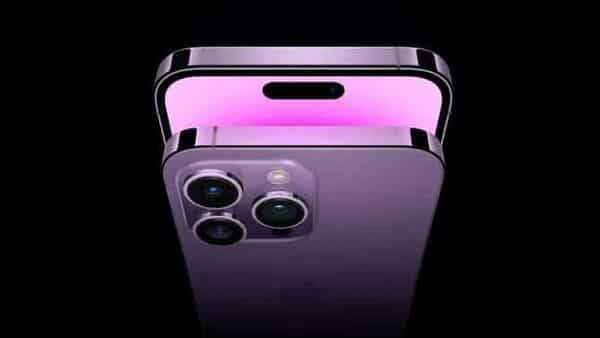As per a report by Mark Gurman of Bloomberg Apple won’t be releasing new iPhones with the TouchID feature anytime soon. Gurman revealed that TouchID will not be included on the new iPhone 15 in his most recent Power On newsletter. He also stated that it is doubtful that TouchID will soon return to high-end flagship iPhone models.

Although TouchID was tested on later iPhones by Apple internally, it was not incorporated into the brand’s high-end models. Apple improved security without sacrificing convenience when it released the TouchID feature on the iPhone 5s model nine years ago. Later on, Touch ID was added by Apple to iPads and MacBooks.
Gurman comments in his newsletter,
“Over the past few years, there have been discussions within Apple about bringing Touch ID back to high-end iPhones. The company has tested in-screen Touch ID and even contemplated putting it on the power button. At this point, I believe Face ID is here to stay, and Touch ID won’t be returning to flagship iPhones—at least anytime in the foreseeable future.”
Gurman also speculated that a Touch ID-enabled iPhone SE may still be a possibility. If so, the company’s iPhone lineup will resemble this separation of Face ID and Touch ID. However, it seems Apple will need more time to refine the Touch ID tech before it is available on the newer iPhones. Ming-Chi Kuo, an Apple analyst, had predicted that Touch ID would make comeback in iPhones in 2025. He attributed the delay to production and development issues.
The report also notes that Apple’s October event is unlikely to happen. Gurman suggests that the anticipated iPad, Apple TV, and Mac product debuts might be publicized with media releases, briefings, and Apple store updates. The Bloomberg report noted that the huge iPhone 14 event in September was probably it for Apple in terms of significant presentations in 2022.
iPhone users would like to see the Touch ID feature return to the iPhone in the future. Facial ID has improved significantly over time, particularly now that it supports face masks and functions in landscape mode too. However, even now, there are scenarios in which adding the Touch ID feature as an alternative would be beneficial. The iPhone’s inclusion of both Touch ID and Face ID has security advantages. For instance, to protect really sensitive information, users can employ both a Touch ID and Face ID authentication.
Apple Inc. built and launched the electronic fingerprint scanner feature known as Touch ID. Users can use it to unlock various iPhone devices, and make purchases from different Apple stores like App Store, Apple Book Store, and iTunes. Using Touch ID users can also verify Apple Pay transactions online or in apps.
On the iPhone and iPad, it can also be utilized to unlock and lock password-protected notes. In 2013, Touch ID made its debut on iPhones with the release of the iPhone 5S. In 2015, a speedier second-generation Touch ID was introduced by Apple in the iPhone 6S. In 2016, the Touch ID feature made its desktop debut in the MacBook Pro.
Each user account on a MacBook can have a maximum of three fingerprints, and a total of five across the system. Since the 2014 release of the iPad Air 2, the Touch ID feature has been on all iPad models. After 2017, all other iPhones since the iPhone X and the more expensive iPad Pro switched to Face ID detection. Apple retained the Touch ID feature on the iPhone 8, second and third-generation iPhone SE, and base model iPads.

I am a law graduate from NLU Lucknow. I have a flair for creative writing and hence in my free time work as a freelance content writer.